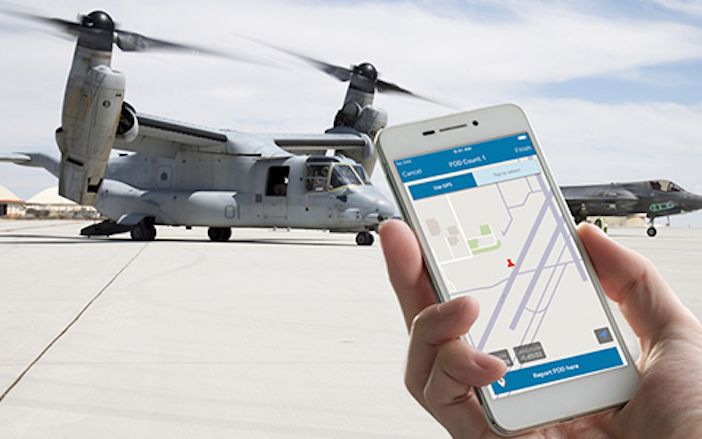Rolls-Royce has developed an app which will allow users to track and record foreign object debris, a common cause of engine damage, straight from their smart phone.
The app has been developed as part of a project with the United States Naval Air Systems Command (NAVAIR) and funded by the US Marine Corps, which aims to reduce future foreign object debris (FOD) costs – potentially amounting to billions of dollars.
The app enables Marines to report FOD found across their sites more quickly and efficiently than existing processes allow. Using a smart phone, users can scan objects to capture high quality imagery, accurate GPS location and size which are then sent for analysis in a central database.
Paul Craig, president of defence services at Rolls-Royce said, “This is a first for our business. Our focus on FOD and our customers doesn’t stop for a moment and this milestone not only demonstrates the value of the app itself but provides a platform for us to springboard into other services.”
Developed at Rolls-Royce, the new FOD App is the first of its kind to be purchased by NAVAIR.
The automated analysis of debris location data, and development of FOD ingestion avoidance initiatives is the first step in offering an integrated range of digital services for NAVAIR’s future FOD vision.
Jonathan Sides, senior design engineer, United States Naval Air Warfare Center, Aircraft Division said, “Foreign object damage, or FOD, is a top removal driver for naval aviation, costing the enterprise over $100 million per year. The introduction of the Rolls-Royce FOD app to aid maintainers, inform decisions, and reduce workload is a critical step forward in the Navy’s collaborative strategy toward eliminating FOD.”
NAVAIR supports the United States Marine Corps across a range of capabilities and functions. The FOD App will be configured for Marine Corps Air Station Yuma, Arizona.





